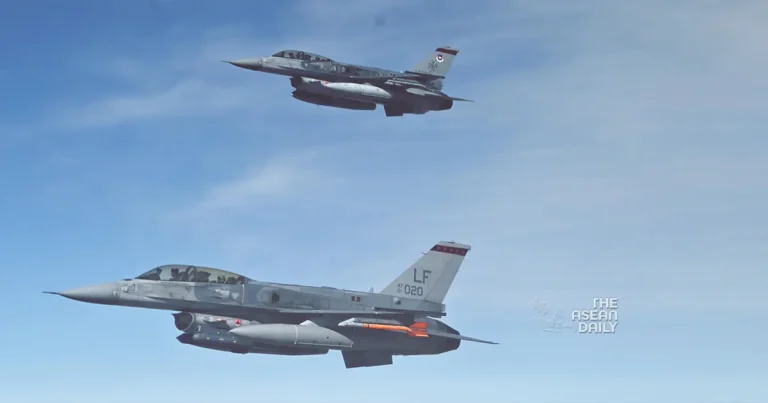24-9-2023 (SINGAPORE) The F-16 fighter jets in Singapore’s arsenal have received a modern makeover, equipping them with advanced features that enhance their combat capabilities. Pilots now have a cutting-edge display mounted on their helmets, eliminating the need to divert their attention from enemy threats or check cockpit instruments for crucial information.
The upgraded F-16s, which were first introduced into service with the Republic of Singapore Air Force (RSAF) in 1998, have undergone significant enhancements. These include a longer-range radar system that enables pilots to detect and engage targets from greater distances. Additionally, the fighter jets are equipped with modern weaponry, such as the Python-5 missile, boasting an impressive range of up to 20km. The enhanced F-16s showcased their capabilities during the unilateral Exercise Forging Sabre, held in Idaho from September 11 to 30.
Lieutenant-Colonel Tan Yong Chin, 39, spoke to the media at Mountain Home Air Force Base, highlighting the improved integration between F-16s and F-15SG fighters during missions. Previously, F-16s lacked a data link that was present in F-15SGs, necessitating manual communication between the pilots of the two aircraft. However, a new data link capability now allows F-16 pilots to share target information with other aircraft and ground forces, enabling them to have a unified operational picture.
LTC Tan emphasized the significance of this development, stating, “But this time round, we can see a common picture, and a picture paints a thousand words.” This advancement eliminates the risk of miscommunication that arises from relaying messages multiple times.
The upgraded F-16s also feature a new central display panel in the cockpit, supplementing the two smaller panels that were previously toggled between to access different screens. The larger third screen offers pilots greater flexibility in viewing the information they require. To further enhance the capabilities of RSAF jets, an automated air-to-air refueling system has been implemented on the A330 Multi-Role Tanker Transport (MRTT). This system extends the endurance of friendly aircraft by refueling them in mid-air. Singapore is the first country to adopt this automated system, which uses cameras and image processors to detect incoming aircraft seeking refueling.
Second Sergeant Vikneshvar Vijayandhran, an air refueling operator from the RSAF’s 112 Squadron, likened the automated system to facial recognition technology, explaining its ability to identify receiver aircraft. The automated system significantly improves the precision and speed of the refueling process. LTC Daryl Yeo, the commanding officer of the squadron, noted that computers can perform tasks faster than humans. The automation allows operators like 2SG Vikneshvar to focus on other critical duties, such as managing the flow of aircraft awaiting refueling, while reducing fatigue.
Despite the advantages of automation, human intervention remains essential. 2SG Vikneshvar emphasized that certain aspects, such as safety instincts, cannot be replicated by machines. Therefore, operators will always be on standby to monitor the process and intervene if necessary.
The upgraded F-16 fighter jets and the automated air-to-air refueling system demonstrate Singapore’s commitment to staying at the forefront of technological advancements in military aviation.




